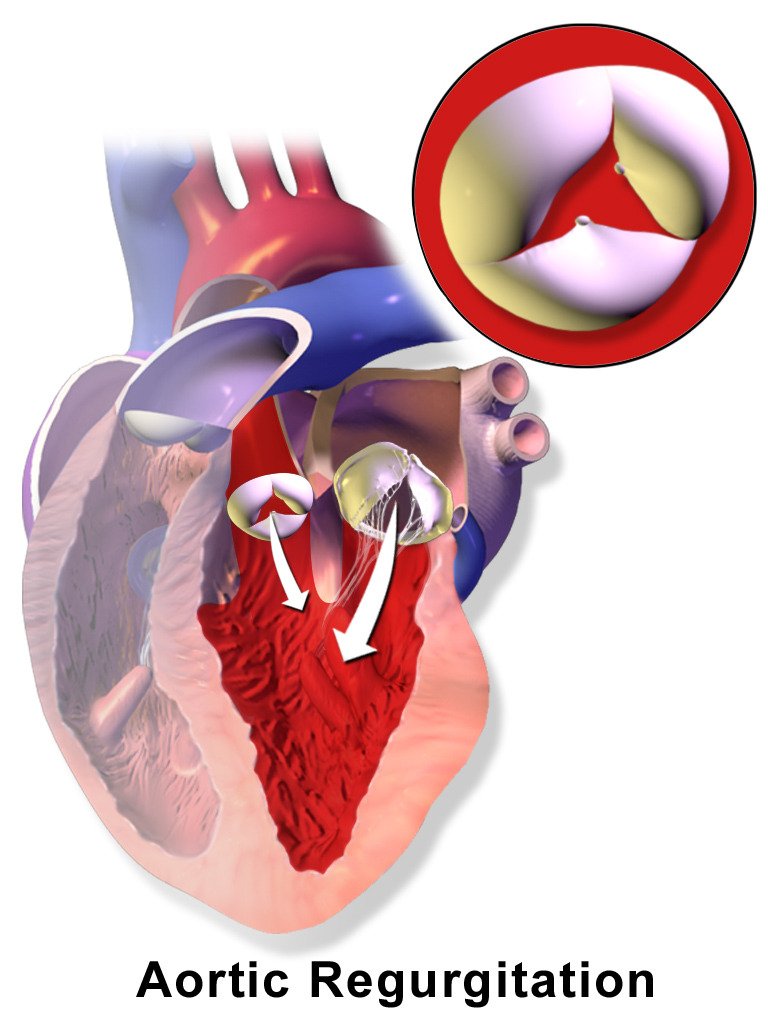Playlist
Show Playlist
Hide Playlist
Aortic Regurgitation: Signs and Symptoms
-
Slides Valvular Heart Disease Aortic Regurgitation Cardiovascular Pathology.pdf
-
Download Lecture Overview
00:00 Aortic regurg. Most common symptom, progressive dysnea on exertion, that is pretty nonspecific. Physical examination. What are you going to find? Early diastolic murmur right after S2, not mid-diastolic murmur and you sure as heck not going to hear what? An opening snap. Next, remember. Now that you have increased amounts of blood in your left ventricle and so therefore, you are going to have an increase in left ventricular size and hypertrophy. That is called eccentric. Typically heard over where? Right second intercostal space. Aortic regurg, right normally you should hear there but if you have pathology it will then go towards the apex on your left side. 00:44 What does this Austin Flint mean to you? Not good. This means that for the most part that the aortic regurg is so bad in which not only blood coming in from your aorta into left ventricle, but you also have blood coming in from left atrium during diastole, don’t you? When you have two huge bodies of fluids hitting against each, you are going to create another murmur and so this is then referred to as being Austin Flint. First, make sure you are solid with the understanding of aortic regurg with everything we have discussed and if you want to go further there is something called Austin Flint with aortic regurg which is not a good indicator. Bad prognosis. That's because all the blood is then causing more turbulent flow. Pulmonary rales, Sure, at some point in time everything will back up into your left atrium, pulmonary veins, you might have issues. 01:39 What is going to happen in the next couple of slides ,the theme is increased blood flow to different parts of the body in which you have bounding pulses. 01:47 The names here, if you want to remember them so be it, but it is more important that you understand the concept. What is Corrigan’s sign? It is forceful distension of arterial pulse with a quick collapse. What happens to pulse pressure? Increased. What happens to diastolic blood pressure? Decreased. Quincke's. Once again capillary pulsation seen on light compression on nail bed. Light, not hard. If you do it hard, sure it disappears. But even on light, it disappears. 02:23 Muller's. Pulses of your uvula. You see this everywhere. Tell me about your pulses. It is increased. You want to know the names? Here they are. Muller's, De-Musset's, Durozier's sign. Bruit.
About the Lecture
The lecture Aortic Regurgitation: Signs and Symptoms by Carlo Raj, MD is from the course Valvular Heart Disease: Basic Principles with Carlo Raj.
Included Quiz Questions
What is an Austin Flint murmur?
- An apical diastolic rumbling murmur at the apex
- A diastolic murmur heard at the right parasternal border, 2nd intercostal space
- A systolic murmur at the 5th intercostal space, left midclavicular line
- A systolic murmur at the left parasternal border, 2nd intercostal space
- A systolic murmur at the right parasternal border, 2nd intercostal space
Which of the following signs of aortic regurgitation carries the worst prognosis?
- Turbulent mixing of retrograde aortic flow and the anterograde mitral flow
- Forceful distention of arterial pulse with a quick collapse
- Capillary pulsation that is seen on light compression of the nail bed
- Pulsation of the uvula
- Bobbing of the head
Customer reviews
5,0 of 5 stars
| 5 Stars |
|
5 |
| 4 Stars |
|
0 |
| 3 Stars |
|
0 |
| 2 Stars |
|
0 |
| 1 Star |
|
0 |




